Mark Zuckerberg said Facebook wants to reach a goal of getting a billion people into virtual reality. Speaking at the fourth annual Oculus Connect event, he said that Facebook is moving VR in that direction with new models, such as the $200 standalone VR headset Oculus Go and the upcoming wireless version of the Rift, dubbed Project Santa Cruz. Much of VR’s fate lies in these new devices, as the industry fluctuates between optimism and despair.
Jason Rubin, head of studios at Oculus, believes that games will be as necessary as new hardware to enticing new people into VR. That’s why Oculus is working with Titanfall maker Respawn Entertainment to create a major VR game coming in 2019. Rubin said that Respawn’s interest in VR shows that the most successful game developers are getting excited about making VR content. Oculus is funding Respawn’s game, and Rubin says it will be a huge effort.
I sat down with Rubin at Oculus Connect. We talked about the Respawn deal, the new hardware, the pivoting that some game developers are doing to avoid being too dependent on VR, and the audience that Oculus is going after with the Rift VR headset.
Here’s an edited transcript of our interview.
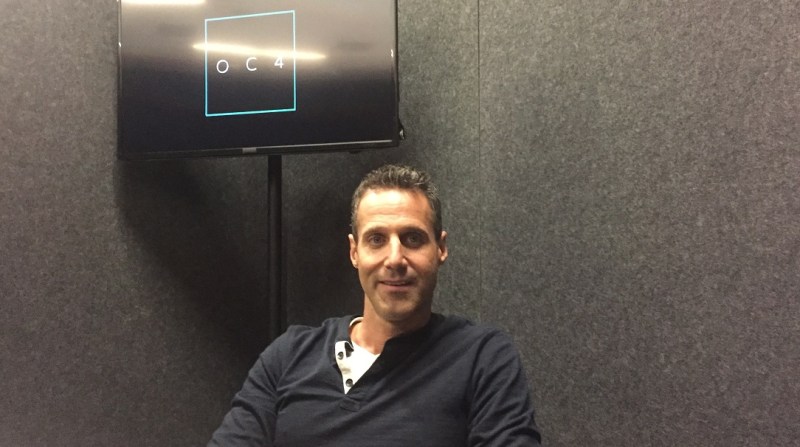
Above: Jason Rubin is head of studios at Oculus.
GamesBeat: I already made the mistake of assuming Titanfall was going to be a VR game.
Jason Rubin: Right. They referenced Titanfall, but it’s not a Titanfall property.
GamesBeat: It’s a new IP — not Star Wars, not Titanfall. What made you guys decide to match up with them?
Rubin: Personally, I’m a big fan. A lot of the studio is. I love all developers. I said that about Dante today, and I meant it. But there is this feeling that a certain scale of developer isn’t in the business. Generally speaking, that’s because the biggest developers and publishers have billion-dollar franchises that they’re constantly … trying to get out. You know how the business works. It’s not lack of interest.
We’ve been talking to Respawn for a long time. The interest has always been there. They just needed the opportunity. The opportunity came together. We can’t be happier about working with them. They are highly motivated, as you heard in the video, to make the best possible VR experience. This is what they got in the business for, just as I got in the business — to put people in worlds.
Beyond that, we need to wait, or you should talk to Respawn. Unfortunately, it’s one of those announcements where we can announce the partnership, but we’ve decided it’s too early to get too specific about what they’re making. I will say it is a major partnership. This is not a side project for them. It’s not a minor 15-people-on-the-side thing. They’re really excited about VR.
GamesBeat: And you’re publishing whatever it will be?
Rubin: Yeah. It’ll be similar to our Lone Echo, Robo Recall, that kind of relationship.
GamesBeat: Were they already interested, or did you talk them into it in some way?
Rubin: I haven’t had to talk a single developer into developing for the platform. My team has simply had to create a financial framework and other frameworks that work for developers. I’ve been saying this for years. I wanted to make movies when I was seven years old. I saw Star Wars, and I wanted to make movies. I asked my father for a video camera, but at that time, it was like $10,000, and it fit on your shoulder. There was a spiral cord that fit in a full DVR that you strapped across your shoulders. He was like, “You’re a kid. There’s no way I’m getting you this.” Eventually, I got him to get me a computer.
My goal was always to create worlds like Star Wars. I wanted to be like George Lucas. He created this fantasy universe that was so amazing. You could like him or Tolkien or whoever, but the idea was, create this alternate universe. The problem was, you were never really putting people in the universe. You could tell a fantastic story. You could give them great challenges. But it was through a window.
All of us — Hollywood, game industry — want to put you in our work. VR allows that. I don’t have to convince developers to do it. They’re always on projects, though, especially the biggest ones. They’re always behind deadline. That’s just the way it works. You have to find the right opportunity. There was no time where we tried to apply leverage or otherwise. It just had to be the right time.

Above: Blade Runner 2049: Memory Lab.
GamesBeat: It’s going to take until 2019. Does that tell us that’s a triple-A project?
Rubin: It’ll be one of our largest productions, if not our largest. These things take time, as you know, especially at the quality level that a studio like that insists upon.
GamesBeat: Are there some good things you can assume about the market by that time? There’s going to be a lot of headsets in place? Maybe better hardware tech than there is today?
Rubin: If anything, this is an indication of our dedication to the Rift. This is a Rift product. We believe the market for a $399 full-time headset, with PCs coming down in price continually — the marketplace will be very different in that time scale, yes. Will we get to Mark’s billion units? Not by 2019. But we’ll be in a very different place than we are now.
Keep in mind, depending on when in 2019 it is — again, there is only so much I can say — that could be farther from today than Rift has been in public existence. That’s how far away that is, depending on when it is.
GamesBeat: Do you want a bunch of projects like this?
Rubin: Of course. We have not announced everything at this show. You can never do that. You never want to do that. We have, as you know, a constant stream of trade shows and other events where we want to make sure we’re announcing something new. There’s plenty more coming.
GamesBeat: Announcing this one, though, has meaning because it can spur more of these kinds of things?
Rubin: Absolutely. Although I will say, at some point, you run out of developers. People keep saying, when are the biggest developers coming along? Who haven’t we hit? It’s getting down to one hand, right?
GamesBeat: You have Bethesda entering the VR market.
Rubin: Well, Bethesda is in the — they are working on stuff on other platforms. One thing is how many things are coming to the Oculus platform? That obviously matters. The second thing is, how many developers are coming to VR? In some ways, that’s really the more important question. There are going to be relationships between hardware manufacturers and developers. Getting the developer interested, getting the publisher interested in VR, is in some ways a bigger win than getting it for you.
Ubisoft, clearly in the market. Zenimax and Bethesda, clearly in the market. Rockstar has announced L.A. Noire. That’s Take-Two putting one of their bigger projects in there. EA has done stuff. Nothing huge announced that I know of now. You may know more than I do. Activision. But again, you’re getting to the point where there are fleetingly few to hold up and say, “See, they’re not all in.” Six months ago, sure. But it’s getting harder to find developers and publishers that aren’t in this marketplace.
The other thing is, once they do it, as you saw with the announcements we made today with Ready at Dawn, they tend to stick with it. Once you catch the bug, you’re infected.
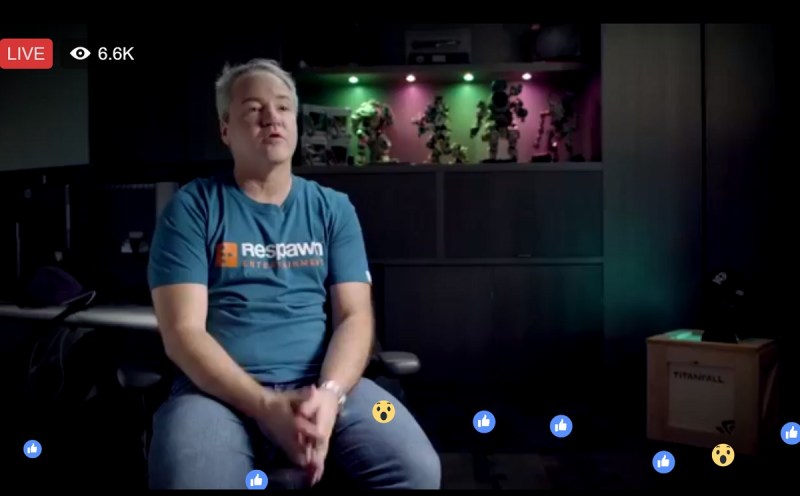
Above: Vince Zampella, CEO of Respawn Entertainment, talks about working on VR for Oculus.
GamesBeat: Are we in a certain stage of the oft-quoted “trough?”
Rubin: It’s hard to say. What I will say about VR that, to me, is extremely interesting — a lot of other revolutions have been driven by the consumer adoption. When the iPhone was launched, there was no app store. By the time the app store launched a year later, a lot of people had the hardware, so it made sense. You look at Facebook’s gaming division. A huge number of people were on Facebook, so they opened up the game division. The audience was there, so the development community came.
In some ways, VR is the opposite. The development community is so excited by the potential of the hardware and the potential of the systems that they’re saying, “I am going to lead the customer into this marketplace. What’s important to me is my art. What’s important to me is the future. I’m willing to put aside the naysaying. The trough is not important. I believe, as a developer, that we’ll pull out of that.” I think this is going to be a developer/publisher-led revolution. Mainly developers.
GamesBeat: Is it good for you guys that some are figuring out how to do things like — Playful is taking Lucky over to Xbox One. They could probably sell more units there. It makes them more viable as a company.
Rubin: Absolutely. I would never begrudge a developer a business. Whatever makes sense for them makes sense for us.
GamesBeat: It’s good to have development happen on VR and have that content go elsewhere?
Rubin: Developers will go back and forth. In some ways, it’s like TV and film for a director. It’s different mediums, different restrictions and relationships, but they’re both interesting. It’s quite possible that it will continue that way even if VR becomes a very large market. We come out of the trough and see everything we’re predicting, but there’s still a world where 2D games make a lot of sense for a lot of people. They’re not going anywhere anytime soon. There will be developers that go across both platforms, just like there are developers that love mobile but also love consoles and PC, and they work in both.
GamesBeat: How do you look at your strata of products now? Gear VR and Go and Santa Cruz and then Rift. Is there a way of describing what kind of content is going to go where?
Rubin: Different sections of the company would answer that question differently depending on what they’re focused on. I’m focused on the consumer, what the consumer gets, and what developers will consider. To me, the question revolves around, fundamentally, what are the degrees of freedom in the input device on the platform?
Oculus Go and Gear VR are very similar to each other in some ways. They’re similar in that they’re both three-degrees-of-freedom headsets, and they have similar input devices. The type of experience you build will be similar across the two of them. Oculus Go has a lot of advantages, but from a software standpoint, similar software.
Regardless of whether there’s mobile hardware in the Santa Cruz prototype, I find it closer to Rift than [the] other two. Because it has the six degrees of freedom, because it has the six-degrees-of-freedom headset, the experiences will tend to be a lot more like Rift. It opens up a Rift-like world. Even though the hardware may have a different chipset — certainly, it won’t be a Windows device when you’re talking about the Santa Cruz prototype. But that, to me, is less relevant than the fact that Dead and Buried works on both. Dead and Buried is a very different game when you’re playing it on Gear VR. There is a Dead and Buried on Gear VR, but it’s not the same Dead and Buried. You can make an extremely similar Dead and Buried on the Santa Cruz prototype compared to Rift.
That’s mentally how I classify it. Other people would talk about things like portable or not portable. There are many ways of slicing it. But from my perspective as a content creator, that’s how I look at the world.
GamesBeat: Intel showed off their WiGig demo, the wireless headset getting images from a PC. That seems like another way to do it.
Rubin: To me, that’s a tweak like higher-resolution screens. It’s nice. It has a price. You might want that or you might not want that. A $399 price point is pretty compelling. If you want to spend a little extra money to get rid of the cable, why not?
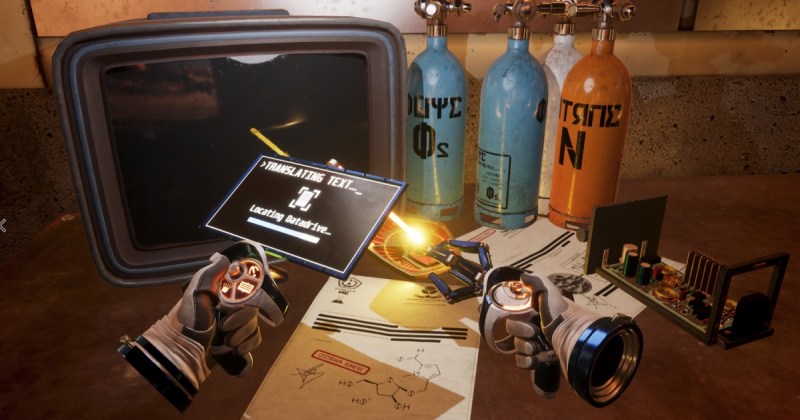
Above: Red Matter is a mystery exploration game set on Mars.
GamesBeat: There isn’t yet something that’s emerging as the ideal platform, do you think? There’s still a lot of experimentation and testing of what consumers are going to go for.
Rubin: I think that’s a fair statement. That will probably continue for a while. When I said there’s infinite potential in VR — and it’s been compared to a lot of things, by the nature of what I said, don’t have infinite potential — I’ll give you an example. I continually read 3D TV comparisons. Is it going the way of 3D TV? To me, that’s like saying this is an orange, so Ferraris won’t work. It’s such an unbelievable difference that the comparison makes no sense.
When you look at a 3D TV in a store, you can say, “I get this.” You wear glasses or you don’t. It takes the shows you’re well aware of. It won’t change the shows at all. It’ll put them in some sort of stereo. That’s it. I can make a decision at that point. Do I or do I not believe that seeing the same show I already watch in stereo is worthwhile? The decision the consumer made was no.
When you look at a VR device and then you look at my four-year-old daughter and what she will experience at your age from a VR device, there is no binary, “Do I like or not like this?” They may look like your glasses by the time you’re that age. Who knows? The infinite potential is that the technology is so early, but the amount of movement forward — lighter, smaller? Can we get the inner ear to believe it’s moving? Can we have hand tracking? Can we track feet? The amount of future in that is so infinite that it’s like looking at the first tablet — I don’t know what that would be. It would be before the Newton. You probably covered it — and saying, “Nobody’s going to use these touch screen things.”
GamesBeat: Are you tackling the hardcore gamer first or the casual gamer?
Rubin: It really depends on the platform. We like to put out a large breadth of content wherever we are. That doesn’t only mean games. That means a lot of non-games. If you look at the announcements today, Coco is not a hardcore game. It’s not a game, really. It’s a social experience. There’s already, even on PC, a breadth of experiences.
If you look at the underlying technology, they tend to come with a type of customer. People who have 970-equivalent graphics cards right now tend to be hardcore gamers — if they have them in their homes as opposed to using them at work. Therefore, the type of content you make for that market is different. You’re going to tend to focus on the people who are most likely to buy your headset for now. But remember, those price points are coming down continually. A 970-equivalent graphics card in five years, that could be anyone who walks into Best Buy.
When you talk about something like Gear VR, it’s a much more diverse crowd. We spend more than 50 percent of our time and energy on that marketplace, outside of games. Then, generally speaking, far more casual for whatever we’re doing.
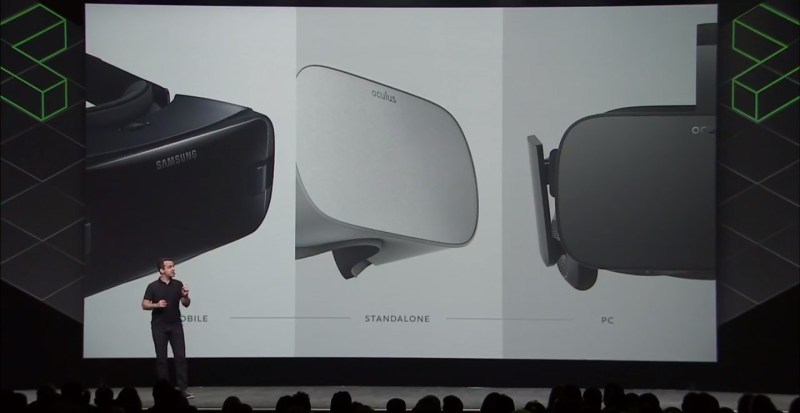
Above: Oculus Connect 4.
GamesBeat: How do you look at some of the stranger things that could be coming into the platform — haptics and all the things that could be in the holodeck? You start adding up lots of different types of accessories that could be thrown in. How do you look at that while also considering that you want this to be a platform for a wider group of people?
Rubin: You can see two ways of going about tackling this market. Our methodology is pretty simple. We believe Rift is a compelling device for a customer today. We want to fill that ecosystem with compelling software, get a large ecosystem of customers, and have the developers and the community grow as quickly as possible. Hence our focus on price, hence our focus on not trying to throw every bell and whistle we have out there, even though we have a lot of these ideas. Our goal is to make a mass-market consumer device that a developer can target and that a consumer can feel comfortable purchasing. That’s been our strategy.
On the other end, you have, “Let’s throw the kitchen sink at the wall, say VR’s not ready, say price points don’t need to come down, throw no money into software development whatsoever, dangle a lot of promises, and see if this ever works out.” I don’t like that latter way of doing things. I think you have an obligation to your consumer to give them a complete experience. Then, once they have the complete experience, it is totally worthwhile to attempt new things.
If somebody wants to try hand tracking, great. If somebody wants to go wireless, great. But to continue to raise the price of the device, never bringing it down, adding features, never creating an ecosystem of interesting content for people — I think that leads to a never-ending hardcore user group that’s really interested in the garage — what can I make? I want to put these things together and create a one-off experience that literally won’t work outside my garage. I don’t think that creates an ecosystem.
Our goal has been to make a much more concise, easy to understand, price-appropriate way of doing things. If a third party wants to come in and add to that ecosystem, well, we’ve been very open with our CAD on the headset. If someone wants wireless, that’s awesome. It doesn’t change the way things work. We love those peripherals. If one of them rises to the point where everyone says you have to have that, OK. That’s a good time to see whether this is additive and whether we should go to a second generation.
But the constant iteration of, “Here’s a new thing,” it messes up the market. It confuses the living daylights out of people. Frankly, if you’re not eventually delivering those things, I think it’s going to hurt the marketplace. There’s not a lot of delivery. There’s a lot of promises to these new ideas, but not a lot of delivery.
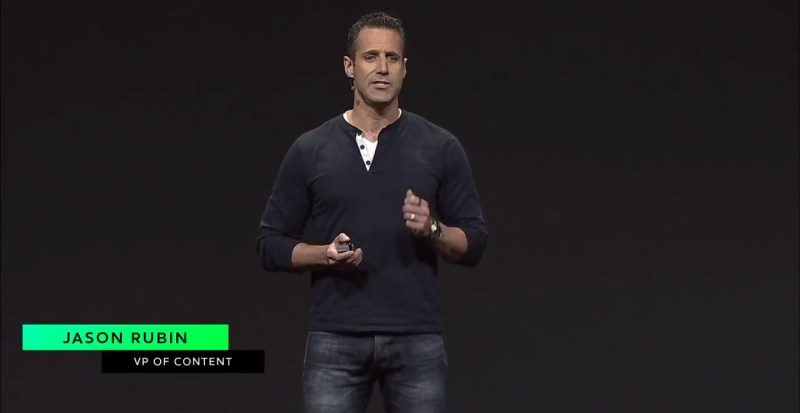
Above: Jason Rubin at Oculus Connect 4.
GamesBeat: At some point, I suppose you want to get to the glasses-on-your-face kind of thing. That seems to suggest bringing AR into the platform at some point. Do you have to shoot for that?
Rubin: The constant trade-off is new technologies and moving toward what we believe is the eventual future, which Mark has placed on his chart from last year as “glasses.” You have to change things to get to glasses because Rift is, by definition, not at the end of the chart. It’s not glasses. At the same time, if at every time you have something you could put in the marketplace, you’re putting it out and never supporting any of those additions with an ecosystem of content that people want to use, you’ll never get to glasses anyway because nobody’s going to buy any of it.
You have to iterate in reasonable chunks that the consumer understands. At every turn, you make sure the consumer is getting a quality experience that makes them say, “I had a great time for a number of years with that piece of hardware. I’ll trust you that the next time I upgrade to whatever bells and whistles you throw in your 2.0, it’s worthwhile.”
Again, there are two ways of looking at this right now in the PC ecosystem. We’re pretty diametrically opposed. If you look at the way consumers are reacting, it’s becoming clear which one is, for the mass market, making more sense.
GamesBeat: You have Microsoft coming in and seeding all these different hardware makers with mixed reality. How does that change the market versus previous entries like Sony and HTC?
Rubin: Well, we welcome the lower price point. That gets more people in VR. The next question will be, are they also supporting that ecosystem with a wealth of content and the other things that I just said we do? That remains to be seen.
I would also say, [Facebook vice president of VR Hugo Barra] stood up on stage today and made a very strong case for why a certain number of cameras is required to get a tracking volume that’s comparable to Touch. What we don’t want to do as a company, now that we’ve shown people how awesome Touch is, is take a massive step back and say that it’s not going to be as good as Touch when we go to inside out tracking.
You’ve done the Santa Cruz demo. You got Touch out there, right? Granted, this is not complete hardware. We’re still prototyping and working on improving it. But you can throw a ball behind you. Someone made a point of playing Superhot and trying to reach down and pick up something beneath them, which is a pretty big part of Superhot. You need to keep your eyes on things and move around like this. If you have a headset that doesn’t give you the capability to do that, that’s a step back. We believe, fundamentally, in Touch’s quality level, and we’re showing with Santa Cruz that it’s also possible with inside-out tracking.
GamesBeat: The only limitation with Santa Cruz is, do people have rooms big enough for it?
Rubin: It’s awesome playing in a big room. But the truth is, you could put Santa Cruz in a room on the scale of Rift gameplay, and it would work just as well. There’s no reason you can’t shrink the room. We’re obviously showing the power of Santa Cruz, and some people will want to do that. But there’s no reason you can’t take a game that has a smaller, constrained space.
Take, for example, Wilson’s Heart. In Wilson’s Heart, you basically stand behind a table and do things. You could do that with Santa Cruz. When you build that game, if this is my table, I’m just not going to do this because there’s no good reason to do it. Also, when you do that in Wilson’s Heart, it pauses the game. You go to skeleton. You see yourself, and it tracks you back. There’s no obligation to have a massive room for Santa Cruz. But regardless of the scale, you can still do this stuff and track your hands. We think that’s vitally important.
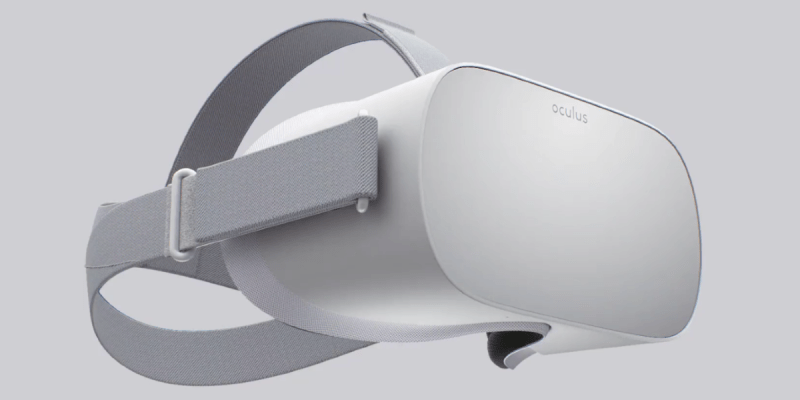
Above: Oculus Go.
GamesBeat: When we see the improved titles a year from now, are there some things you can predict about them? What kind of experiences are we going to see? What kind of quality should we notice?
Rubin: It’s all very incremental. Like I said on stage, no one really thought about how a hand should do this. To date, only Lone Echo has done this, and it is so much more immersive than when your hand goes right through things. A lot of little incremental steps are happening.
I also made the point on stage today — sometimes, it’s not the Lone Echoes and the Ready at Dawns, with large budgets, that shake things up. It’s the Dantes. It’s one person who says, “All of you are wrong. I’m gonna do my own thing.” And people love it. There’s a market there. I was wrong. That was a huge, huge win for Dante. Oculus had an opinion, Dante had a different opinion, and he found a market. That’s not to say there aren’t people who do want comfortable, no teleport. It’s better for certain types of people. But Dante proved that there’s a large audience out there that wants to do something else.
We’re going to rely both on our high-end, high-budget, extremely talented, large teams, as well as the small independent developers, to continually, incrementally make things better and more interesting. It’s those little things. Once one person figures this out, next year, you’ll see that in a bunch of titles. These things all roll together and become the language of making games in VR.

